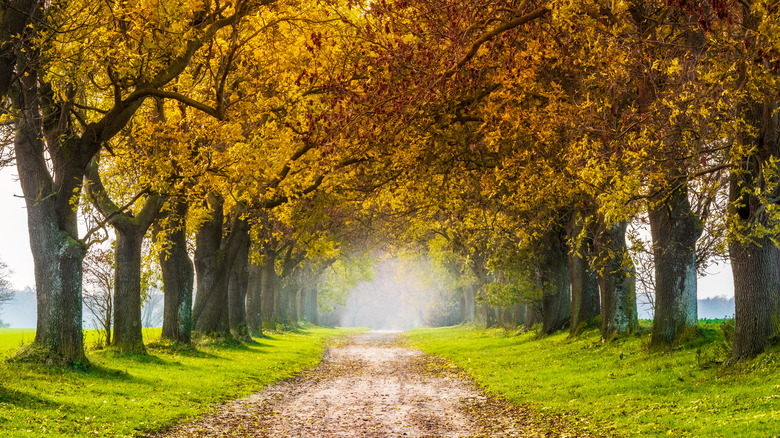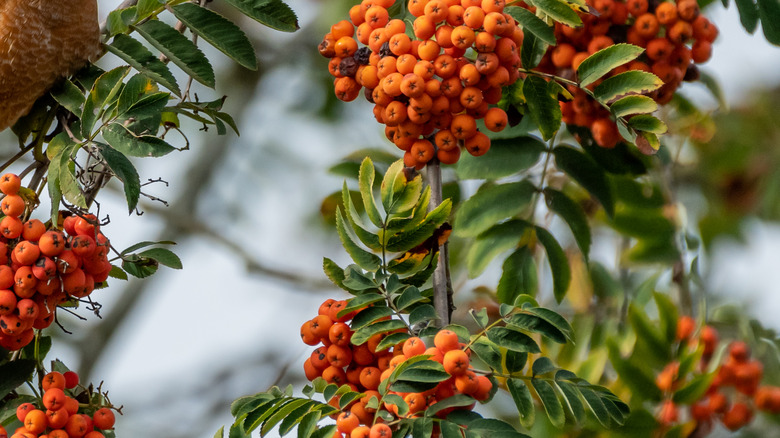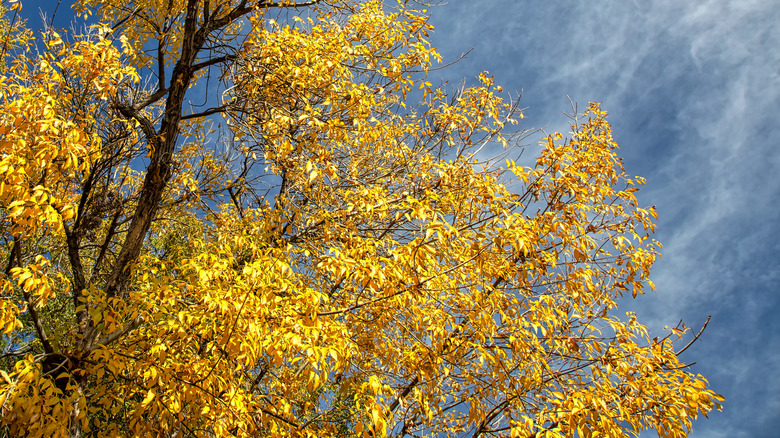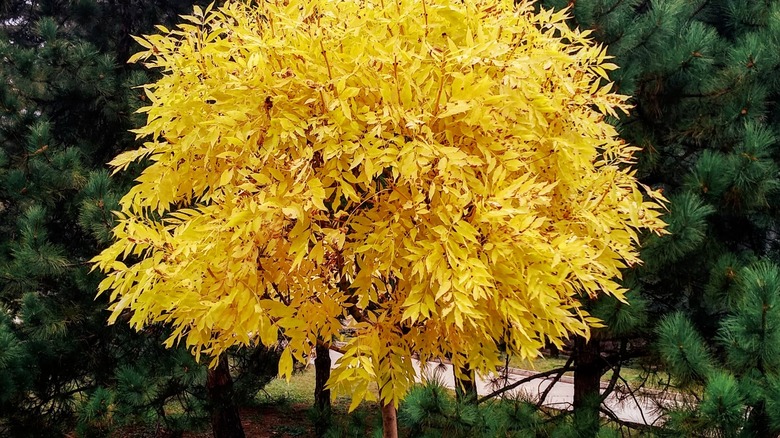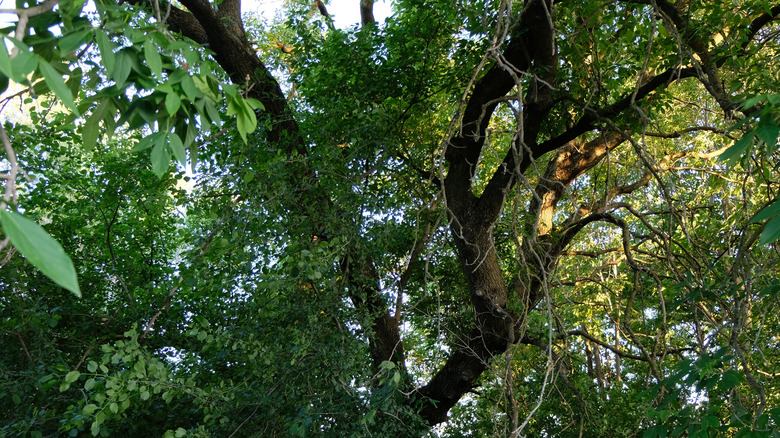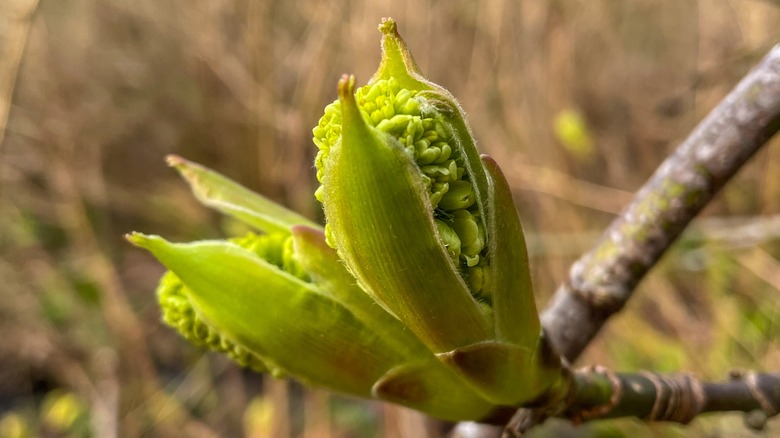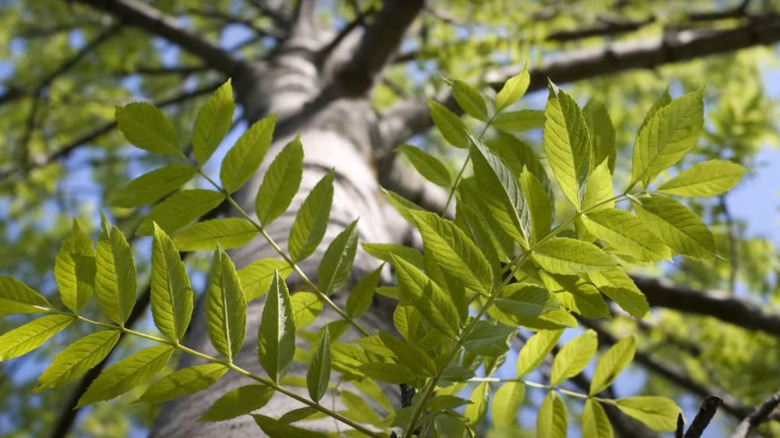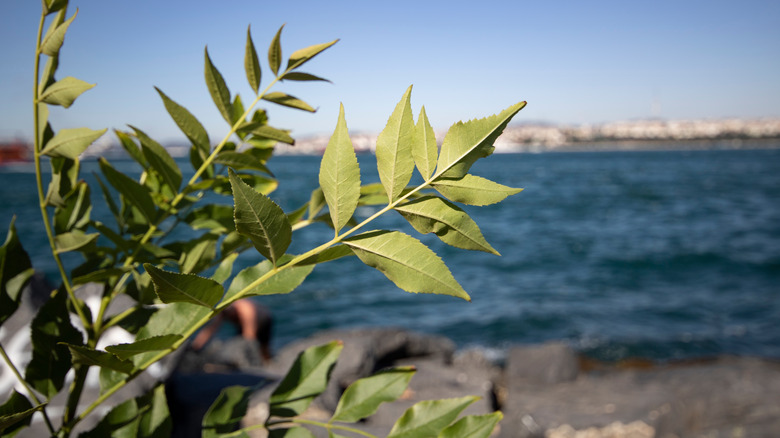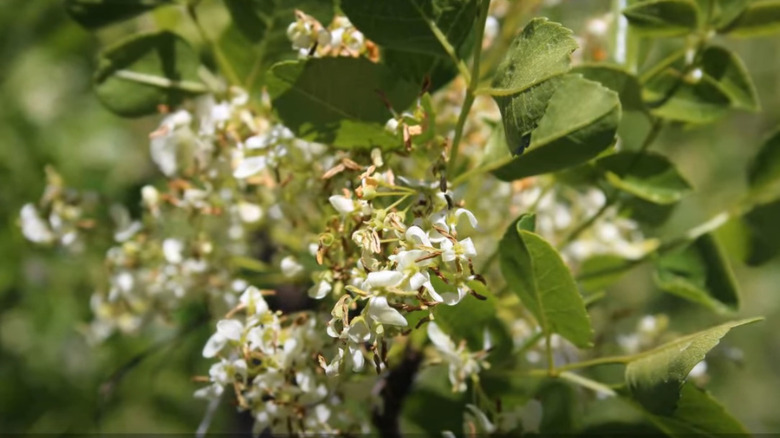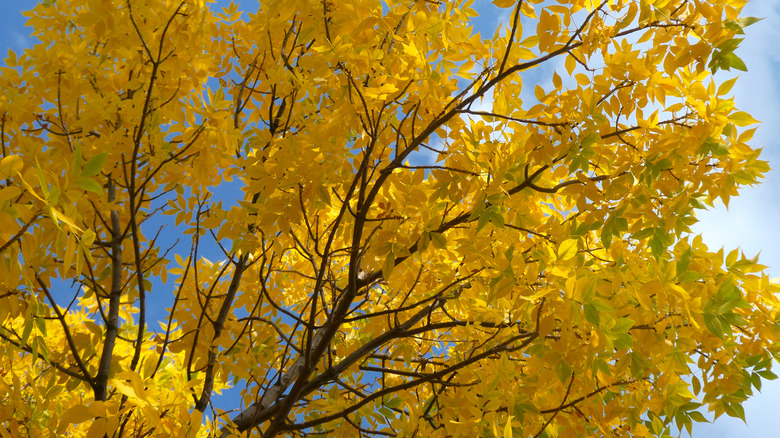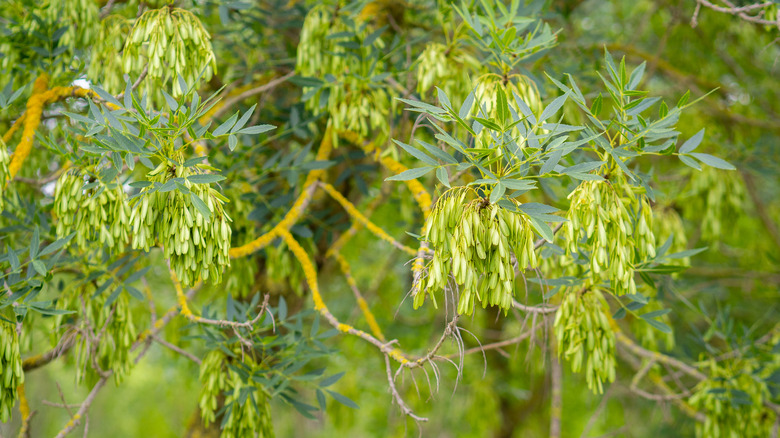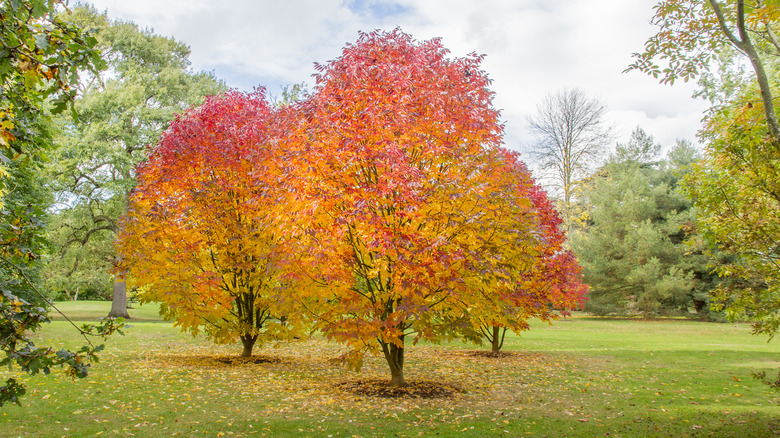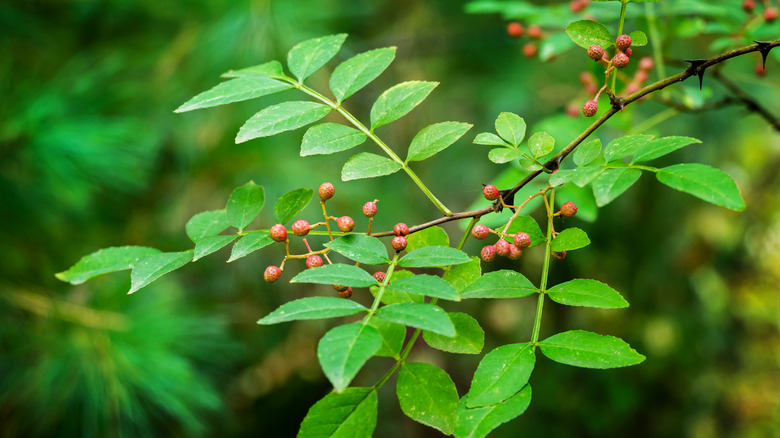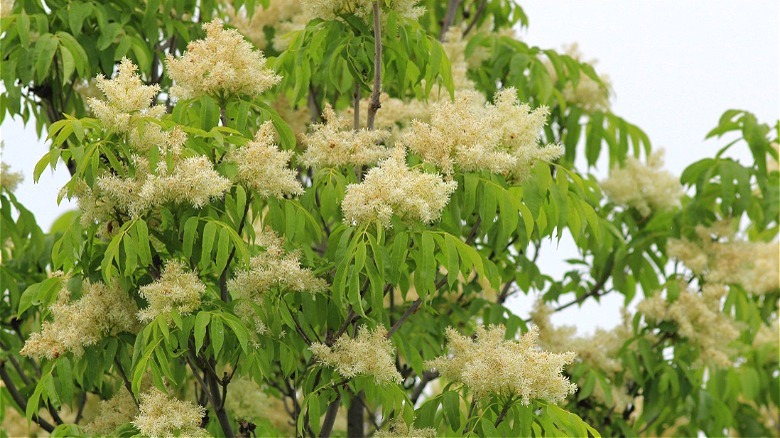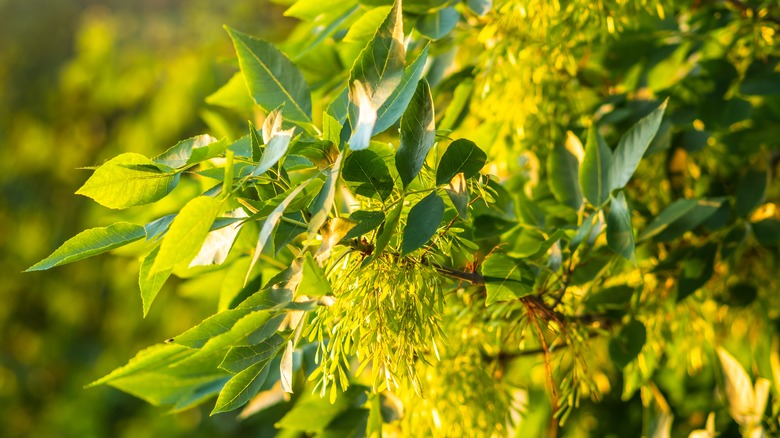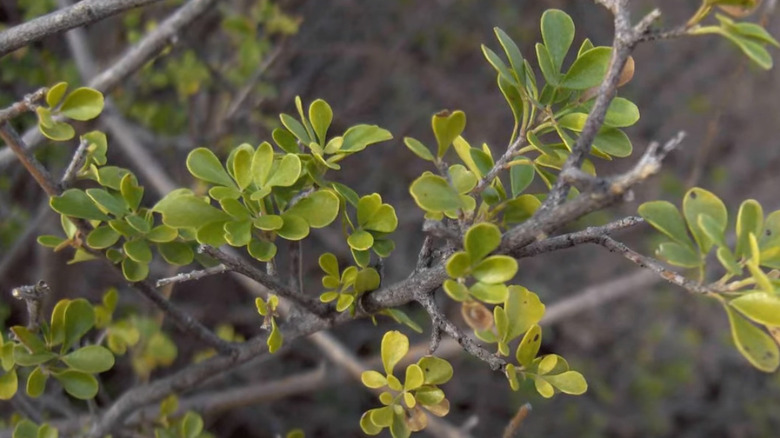15 Ash Trees That Bring Color To Your Autumn Garden
Once one of the most popular tree varieties in the U.S., ash trees offer an abundant selection for your yard. While admittedly not as showy in the spring as other tree families, in the fall, these expansive trees sport beautiful shades and colors.
According to Tom Kimmerer, author and scientist at the nonprofit Venerable Trees, Inc., ash varieties are a perfect choice for bringing lovey leaf spans in the summer months and a variety of rich colors each autumn. While their numbers in the U.S. have dwindled due to the spread of the emerald ash borer, ash trees are still a popular choice in many regions.
Not only are ash trees popular as habitats for various birds, insects, and woodland animals, but many varieties are also believed to have medicinal properties. What's more, ash wood is one of the most popular varieties for building guitars and furniture. Whatever the size of your garden or yard, there's an ash tree out there that can bring to it dimension, cover, and rich, warm colors every fall.
1. American mountain ash
The American mountain ash (Sorbus americana) grows well in northern areas in the United States, particularly USDA zones 3 through 6. According to Lady Bird Johnson Wildflower Center, this variety thrives in all light conditions and soil types. Trees grow from 15 to 20 feet tall and bloom with small white flowers, with coral berries appearing in late summer. Autumn brings golden-orange leaves on rich red leaf stalks.
2. Velvet ash
The velvet ash (Fraxinus velutina), according to the University of Florida Extension, produces a rich vivid yellow in the fall. Velvet ash grows best in USDA zones 7 and 8 in the Southwestern states. Also known as the Arizona ash, these trees are fast-growing and reach anywhere from 30 to 50 feet and up to 20 feet in width. The velvet ash prefers well-drained soil, full or partial sun, and can thrive in drought conditions.
3. Manchurian ash
The Manchurian ash (Fraxinus mandshurica) grows to an impressive 40 to 50 feet tall and up to 20 feet wide. This tree thrives best in USDA zones 3 through 6, preferring full sun and well-drained soil. According to the University of Minnesota, the Manchurian ash is native to China and Japan, blooming each spring with small greenish-yellow flowers. Once autumn arrives, it explodes in a bright, vibrant yellow.
4. Black ash
The black ash (Fraxinus nigra) often prefers wooded and wet areas and thrives in USDA zones 3 through 9, growing best in damp soil and partial sun. Native to the Northeast, this tree blooms each spring with small purple flowers, with leaves turning a bright, golden yellow in the fall. According to the University of Iowa, trees can reach anywhere from 50 to 80 feet high and span up to 70 feet wide.
5. Oregon ash
The Oregon ash (Fraxinus latifolia), native to the west coast, grows best in USDA zones 7 through 9. Trees can grow to a height of 70 feet and a width of 50 feet. According to Gardenerdy, these trees flourish in wet and rich soil conditions and can withstand the limited sunlight of the Pacific Northwest. In the spring, Oregon ash trees sprout small green and white blooms. Autumn colors include deep yellows and bright oranges.
6. Blue ash
The blue ash (Fraxinum quadrangulata) was once one of the most popular varieties of ash trees in the central United States but has often been the victim of the emerald ash borer. According to the University of Kentucky, blue ash thrives in USDA zones 4 through 7; the trees can also grow in a number of soil types and light conditions.
Blue ash can reach 50 to 70 feet in height with a span of up to 60 feet wide. The trees feature small purple blooms each spring and, in autumn, sport leaves in a range of greenish-yellow to bright golden shades.
7. Pumpkin ash
Pumpkin ash (Fraxinus profunda) can grow up to a height of 125 feet, though usually average between 60 to 80 feet high and 50 feet in width. Trees grow tiny purple flowers each spring and erupt into a large variety of colors in the fall, including brown, copper, purple, and burgundy.
According to the North Carolina Extension Gardener Plant Toolbox, the tree gets its name from the roundish swelling of the base in the often wet conditions of the floodplains and riverbeds where it is usually found. The pumpkin ash prefers moist but well-drained conditions and full to partial sun in USDA zones 5 through 9.
8. California ash
The California ash (Fraxinus dipetala), named for one of the states where it is encountered most, prefers full or partial sun and low moisture soil. The California ash thrives in higher elevations and sloped areas, according to the California Native Plant Society.
Each spring, it features clusters of fragrant white flowers, and in the autumn, leaves ranging from greenish-yellow to bright gold. A smaller variety of ash than many, it usually averages 15 to 20 feet tall and 10 feet in width. The California ash grows well in USDA zones 7 through 9.
9. Green ash
The green ash (Fraxinus pennsylvanica) was once one of the most popular choices in American urban environments due to its durability in various soil, sun, and pollution conditions. According to the Arbor Day Foundation, the trees have often been victim to the emerald ash borer in the last two decades.
Green ash trees grow well in USDA zones 3 through 9 and can endure various sun and soil conditions well if they can avoid pests. Green ash trees can reach heights of 50 to 60 feet and widths up to 25 feet. Trees sprout small green and white flowers in the late spring, and in the autumn, display vivid golden-yellow leaves.
10. Narrow leaf ash
The narrow leaf ash (Fraxinus angustifolia) is an ash variety native to Europe and Northern Africa. It grows best in USDA zones 6 through 9 and prefers full sun and dry to normal soils, according to Backyard Gardener. Trees can reach up to 80 feet in height and 40 feet in diameter. The tree blooms with small brownish-purple blossoms each spring and displays autumn colors in a range of purple to red.
11. White ash
Another once-popular tree in the United States, the white ash (Fraxinus americana) has greatly dwindled in numbers due to the emerald ash borer, according to Morton Arboretum. An otherwise durable tree that tolerates most soil and light conditions, white ash trees can easily be spotted in the fall for their bright yellow, orange, and red leaves, displaying multiple colors on a single tree.
A larger ash variety, white ash trees average up to 80 feet in height and up to 60 feet in diameter for mature trees. The tree is named for the small white clusters of flowers that bloom each spring. White ash trees grow best in USDA zones 4 through 9.
12. Prickly ash
While technically not in the Fraxinus genus of ash trees, the prickly ash (Zanthoxylum americanum) does feature stunning yellow to gold fall colors and red berries. Usually a variety of shrub or small-sized tree growing up to 25 feet tall, this variety is known for its prickly bark and stems. Native to the United States, the prickly ash grows best in USDA zones 3 to 7, but can accommodate all variety of soil and light conditions, according to Iowa State University.
13. Manna ash
The manna ash (Fraxinus ornus) is a smaller ash variety, growing only up to 25 feet tall and 10 feet wide. Known for their fluffy white clustered blossoms each spring, they display rich purple and red shades in the autumn.
According to Botanical.com, manna ash trees are native to the Mediterranean region and are known for their medicinal properties. While they can tolerate a number of light and soil conditions, they are not friendly to frost or extreme cold. They do best in USDA zones 5 and 6.
14. European ash
European ash trees (Fraxinus excelsior) take their name from the global region they're most commonly found in. According to the Royal Botanic Gardens at Kew, this variety of ash is one of the most commonly found in Europe and was often harvested for medicinal purposes, as well as for warding off bad spirits.
While also a frequent victim of disease and pests in some regions, the European ash is hardy in most soil, sun, and pollution conditions, making it a popular choice for urban areas. It particularly thrives in USDA zones 5 through 7. Trees can reach up to 80 feet tall and 60 feet wide. The European ash features small purple blooms each spring and bright shades of yellow and gold in the fall.
15. Gregg's ash
Gregg's ash (Fraxinus greggii) is a smaller ash variety, with bushes and trees growing only to around 20 feet high and 5 to 10 feet in diameter. According to the Lady Bird Johnson Wildflower Center, the tree is named after 19th-century explorer and author Josiah Gregg, who first made note of the variety in his travels.
Gregg's ash thrives in partial shade and dry soil conditions, where it does well in USDA zones 7 through 10. Gregg's ash features small green blooms in late spring and displays autumn colors varying from greenish-yellow to deep golden.
